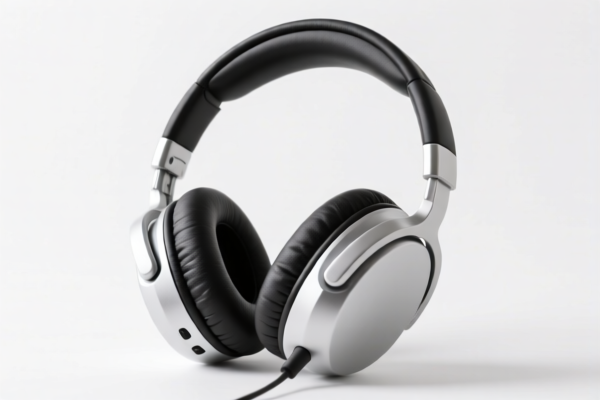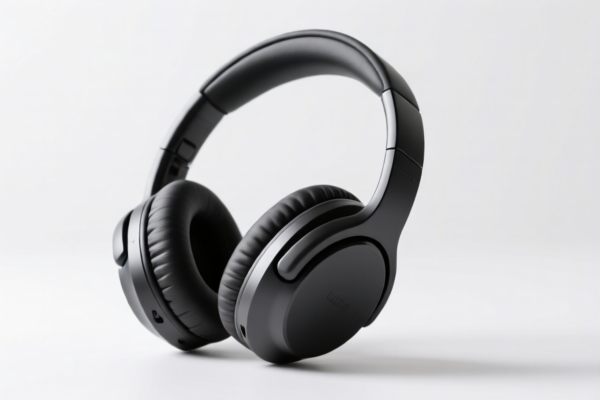| HS Code | Official Doc | Tariff Rate | Origin | Destination | Effective Date |
|---|---|---|---|---|---|
| 8518302000 | Doc | 30.0% | CN | US | 2025-05-12 |
| 8518500000 | Doc | 55.0% | CN | US | 2025-05-12 |
| 8543706000 | Doc | 55.0% | CN | US | 2025-05-12 |
| 8543906800 | Doc | 55.0% | CN | US | 2025-05-12 |
| 9020009000 | Doc | 32.5% | CN | US | 2025-05-12 |
| 9020006000 | Doc | 32.5% | CN | US | 2025-05-12 |
| 8537109170 | Doc | 57.7% | CN | US | 2025-05-12 |
| 8537109150 | Doc | 57.7% | CN | US | 2025-05-12 |
| 8535904000 | Doc | 57.7% | CN | US | 2025-05-12 |
| 8535908060 | Doc | 57.7% | CN | US | 2025-05-12 |
| 6114909070 | Doc | 35.6% | CN | US | 2025-05-12 |
| 6114909040 | Doc | 35.6% | CN | US | 2025-05-12 |




Radio Headset
A radio headset is a communication device combining a headset and a radio transceiver, enabling bidirectional audio communication. It typically consists of a microphone for transmitting speech and earphones for receiving audio. These devices are employed in a wide array of applications requiring hands-free, real-time voice communication.
Material
- Housing: Commonly constructed from durable plastics like ABS or polycarbonate, sometimes reinforced with metal components for increased robustness.
- Headband/Earcups: Utilize materials such as padded nylon, leatherette, or foam for comfort and noise isolation.
- Microphone: Often incorporates electret condenser microphones, known for their sensitivity and compact size. Boom microphones are frequent for clearer voice capture.
- Electronics: PCBs containing radio frequency (RF) circuitry, amplifiers, and processing components.
- Wiring/Connectors: Copper wiring and standardized connectors (e.g., 3.5mm, USB-C, proprietary) facilitate signal transmission and power.
Purpose
The primary purpose of a radio headset is to provide clear, hands-free voice communication over a radio frequency band. This allows users to communicate while performing tasks that require both hands or when direct verbal communication is impractical.
Function
- Transmission: The microphone captures the user’s voice, which is then converted into an electrical signal. This signal modulates a radio frequency carrier wave and is transmitted via an antenna.
- Reception: The antenna receives radio signals. The receiver demodulates the signal to extract the original audio, which is amplified and output through the earphones.
- Noise Cancellation/Reduction: Many headsets incorporate noise cancellation or reduction technologies to minimize background interference and improve audio clarity.
- Power Management: Battery-powered or externally powered, managing power consumption for extended operation.
- Channel Selection: Allows users to select a specific radio frequency channel for communication, avoiding interference from other users.
Usage Scenarios
- Public Safety: Police, fire departments, and emergency medical services utilize radio headsets for coordinated response during critical situations.
- Security: Security personnel employ headsets for surveillance, access control, and incident response.
- Construction/Industrial: Workers on construction sites or in industrial settings use headsets for team communication, equipment operation, and safety coordination.
- Event Management: Event staff use headsets for coordinating logistics, managing performers, and ensuring smooth event execution.
- Motorcycle Communication: Riders use Bluetooth or dedicated radio headsets for communication with passengers or other riders.
- Gaming: Gamers utilize headsets for voice chat and in-game communication.
- Aviation: Pilots and ground crew use specialized headsets for air traffic control and aircraft operations.
Common Types
- Two-Way Radios with Headsets: Traditional radios paired with a headset and push-to-talk (PTT) functionality. Operate on specific radio frequencies.
- Bluetooth Headsets: Wireless headsets utilizing Bluetooth technology for communication with smartphones, computers, or other Bluetooth-enabled devices. Often used for hands-free calling and voice assistants.
- DECT Headsets: Digital Enhanced Cordless Telecommunications (DECT) headsets provide secure and reliable wireless communication, commonly used in call centers and office environments.
- Wireless Communication Headsets (e.g., Motorola Solutions, Kenwood): Proprietary wireless communication systems offering advanced features like noise cancellation, encryption, and integration with other communication devices.
- Bone Conduction Headsets: Transmit sound through the bones of the skull, leaving the ears open to ambient sounds. Used in situations requiring situational awareness.
- Aviation Headsets: Specialized headsets designed for pilots, featuring noise cancellation, communication with air traffic control, and compatibility with aircraft communication systems.
- Gaming Headsets: Focus on audio quality, surround sound, and comfortable fit for immersive gaming experiences.
Based on the provided information, a radio headset can be classified under several HS codes, depending on its specific features and intended use. Here's a breakdown of potential classifications:
-
8518302000: Headphones and earphones, whether or not combined with a microphone, and sets consisting of a microphone and one or more loudspeakers: Other. This code covers a broad range of headphones and earphones, including those with microphones. If the radio functionality is secondary to the audio function, this is a likely classification.
- Chapter 85: Electrical and electronic equipment for making electrical connections (insulated wire or cable, connectors, switches and plugs, junction boxes).
- Heading 18: Electrical apparatus for switching or protecting electrical circuits, or for making connections to or in electrical circuits.
- Subheading 30: Other.
- Tax Rate: Basic tariff: 0.0%, Additional tariff: 0.0%, After April 2, 2025, additional tariff: 30.0%. Total tariff: 30.0%.
-
8518500000: Electric sound amplifier sets. If the headset incorporates a significant amplification function beyond basic audio reproduction, this code may apply.
- Chapter 85: Electrical and electronic equipment for making electrical connections (insulated wire or cable, connectors, switches and plugs, junction boxes).
- Heading 18: Electrical apparatus for switching or protecting electrical circuits, or for making connections to or in electrical circuits.
- Subheading 50: Electric sound amplifier sets.
- Tax Rate: Basic tariff: 0.0%, Additional tariff: 25.0%, After April 2, 2025, additional tariff: 30.0%. Total tariff: 55.0%.
-
8543706000: Electrical machines and apparatus, having individual functions, not specified or included elsewhere in this chapter; parts thereof: Other machines and apparatus: Articles designed for connection to telegraphic or telephonic apparatus or instruments or to telegraphic or telephonic networks. If the headset is specifically designed to connect to communication systems (e.g., walkie-talkies, telephones), this code could be relevant.
- Chapter 85: Electrical and electronic equipment for making electrical connections (insulated wire or cable, connectors, switches and plugs, junction boxes).
- Heading 43: Electrical machines and apparatus, having individual functions, not specified or included elsewhere in this chapter; parts thereof.
- Subheading 70: Other machines and apparatus.
- Tax Rate: Basic tariff: 0.0%, Additional tariff: 25.0%, After April 2, 2025, additional tariff: 30.0%. Total tariff: 55.0%.
It is important to determine the primary function of the headset to select the most accurate HS code. If the radio functionality is integral and the device operates as a combined radio and headset unit, 8518500000 or 8543706000 may be more appropriate. If it is primarily a headset with an added radio feature, 8518302000 is likely the correct classification.
Customer Reviews
No reviews yet.